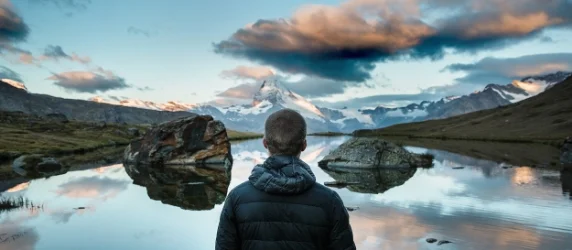How do you think of self-care? Is it an elaborate spa weekend? Spending a week at a tropical resort? While those acts are certainly classified as self-care, there are several more continual self-care practices that you can incorporate into your daily routine. For instance, taking a long shower, going for a walk, and reading a good book are nourishing gifts you can give to yourself easier than you can give yourself a vacation. Self-care is the intentional choice to engage in activities, big and small, that are necessary for optimal comprehensive health: emotional, psychological, physical, social, and spiritual.
In our society it is commonplace to equate self-care with selfishness. The premise of this logic is care for others first and for yourself if there is time, energy or resources left over. What if I told you that the majority of people have it backwards? When you care for yourself first and foremost you are actually able to better care for others.
First, let's address the guilt factor that comes with self-care with a shift in perspective. I like to imagine all of the things that make me who I am as a house with a solid foundation. There are supporting beams that represent things I need to actively maintain to keep me standing strong. This is what self-care is: the supporting beams. You need these things to maintain a strong sense of self. You can give away one support beam, maybe even two if you are feeling generous. However, as a society we tend to give more beams away than we have for ourselves. Your home is likely to crumble when this happens. If all of your support beams are present and strong you are in the position to give to others without sacrificing your own stability.
Realizing that we need to maintain our own "support beams" before we think about giving to others first can be a liberating shift in perspective. One that, in the long run, will serve to make us better partners, friends, listeners, workers, etc. When you understand what you need to function to the best of your abilities and give yourself the nourishment you need, you are naturally going to be in a more refreshed state to help others.
There are plenty of other analogies such as you cannot share water from an empty glass or in the case of a flight you put on your own oxygen mask before helping others. They all speak to the same idea: nourish yourself first.
You likely already engage in some forms of self-care in your daily routine but you may not be placing these activities in the "I'm-doing-this-because-it's-good-for-me" category. You can make self-care an active and intentional practice by reminding yourself of why you do these activities. Maybe you are already in the habit of enjoying a cup of coffee and a few moments of silence in the mornings. Why not practice this with purpose and recognize the calming effect that this has on your body and mind?
Channeling the positive effects that any self-care activity brings allows you to register that you are providing nourishment and helps you to be more present in that self-care moment. It is the difference between being on autopilot when you give to yourself versus being an active participant. Take in how self-care makes you feel relaxed, energized or focused. Be present in the positive sensations, because that is what self-care is all about. Remind yourself that self-care is an ongoing process rather than something you can just check off your to-do list.
If you are not already in the habit of giving to yourself, allow me to suggest ways you could begin. Start by thinking about what feels fulfilling to your mind, body, and soul. Make sure there is variety in how you give to yourself. Remember, self-care doesn't have to be done alone, as long as the purpose is self-nourishment. So go walk and talk with a friend, or volunteer to help others, as long as the purpose is to feed your soul and rejuvenate you.
Get into the practice of giving to yourself as a continual, conscious, connected routine. I am not encouraging you to make sure every "need" on your self-care list is checked off at all costs every day of the week, but make sure at least one or two things are done on a daily basis. There will be times that self-care will be difficult. Try to do a small self-care activity consistently, especially during those difficult times. Allow self-care to be a source of strength, renewal, and connectedness. If you need additional ideas on self-care tips, check out these tips for 45 self-care practices.
